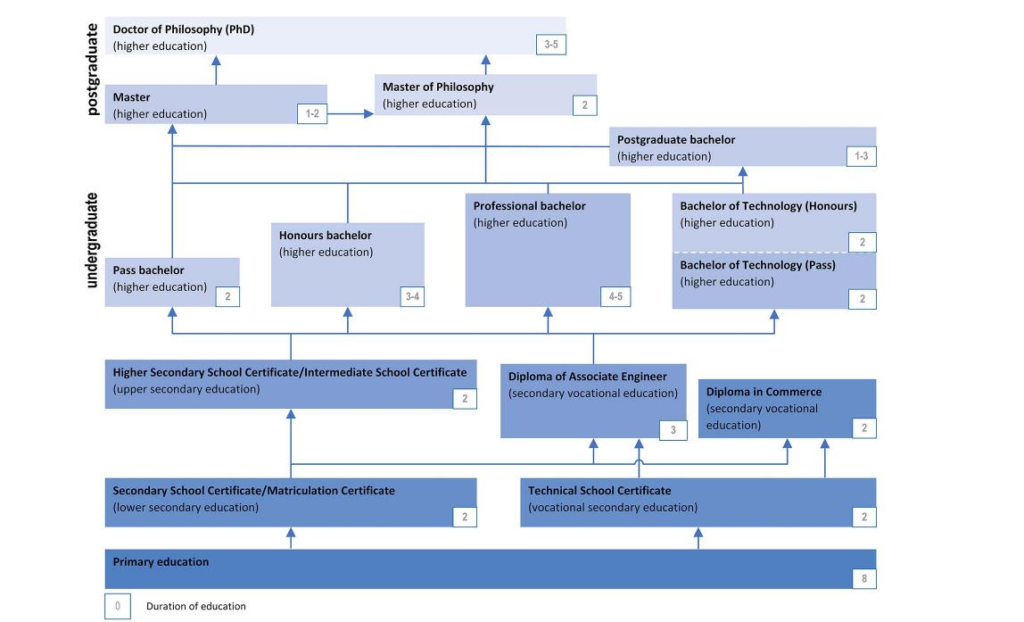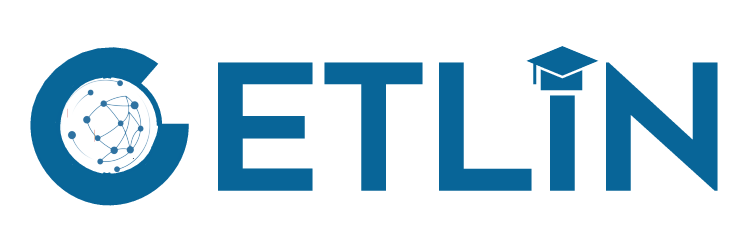Socio-political context & implications for teaching/educational policy
Pakistan is made up of four provinces, Islamabad as the capital, and the two autonomous areas of Azad Jammu and Kashmir and Gilgit-Baltistan. Baluchistan, Punjab, Sindh, and Khyber Pakhtunkhwa (KPK) are the four provinces.
Education in Pakistan is controlled by The Federal Ministry of Education and the provincial governments, with the federal government primarily assisting in curriculum creation, accreditation, and research and development funding. The state is required by Article 25-A of the Pakistani Constitution to offer free and obligatory quality education to children aged 5 to 16. “The State shall provide free and compulsory education to all children of the age of five to sixteen years in such a manner as may be determined by law”.
Preschool (for children aged 3 to 5 years), primary (grades one through five), middle (grades six through eight), high (grades nine and ten, leading to the Secondary School Certificate or SSC), intermediate (grades eleven and twelve, leading to a Higher Secondary School Certificate or HSSC), and university programs leading to undergraduate degrees are the six levels of education in Pakistan. Two types of higher education institutions are universities and degree-awarding institutions, both of them offer degrees.
Around 60% of pupils in Pakistan attend public schools, with the remaining 40% attending private schools. Students in public schools are largely from low-income families, whereas students at private schools are primarily from middle- and upper-income families (TIMSS, 2019).
There is a huge gender divide in Pakistan’s educational system, with males outnumbering females. Pakistan was ranked the second-worst country in the world in terms of gender inequality in the 2016 Global Gender Gap Report ( Moin et al. 2018). Pakistan’s literacy rate remains poor. Pakistan has the second-largest out-of-school population in the world, following Nigeria (16.8 million children). The literacy rate differs by location. In Islamabad – the capital of Pakistan, the literacy rate is 82 per cent, while in Torghar, it is 23 per cent. And more importantly, literacy rates differ by gender. Female literacy is 9.5 per cent in tribal areas, while Azad Jammu and Kashmir have a literacy rate of 74 per cent.
Furthermore, English is rapidly gaining popularity in Pakistan, with over 92 million people (or 49% of the population) speaking it. Pakistan also produces 445,000 university graduates each year, as well as 10,000 computer science graduates. Source (Wikipedia: Education in Pakistan.)
Pakistan, one of the South Asian developing countries is facing real challenges in terms of didactical strategies improvement and implementation of student-centred approaches by secondary school teachers (Khalid & Khan 2006; Memon, 2007). The quality of schools is based on the personal attributes, teaching beliefs, and quality of a teacher.
Pakistan has around 70 languages, including Punjabi, Pashto, Sindhi, and Balochi, but Urdu and English are the official languages. Since colonial times, English has been the primary medium of teaching in elementary and secondary schools. Higher education is also primarily taught in English, however, some programs and institutes also teach in Urdu.

Source: Nuffic

Source: Suhag & Khan (2020)
Current trends in educational policy and practice (e.g. relevant curricular reform cycles) & regional differences
Education in Pakistan is deteriorating in quality. Due to a shortage of teachers and inadequate laboratory facilities, the curriculum has become out-of-date and irrelevant to current needs. When students graduate from an institute, their education is focused solely on cramming, and they lack both professional and communication skills. Furthermore, the universities in this country are prohibitively expensive, preventing Pakistani students from pursuing further education at these institutions. Numerous education projects have been launched to improve Pakistan’s education system since 1947, but not a single one has been properly implemented and implemented.
The followings are the list of education policy in Pakistan:
The Pakistan Educational Conference 1947, Commission on National Education 1959; New Education Policy 1970; Education Policy 1972-80; National Educational Conference 1977; National Education Policy and Implementation Program 1979; National Education Policy 1992; National Education Policy 1998-2010; Education Sector Reform 2001-2005;National Education Policy 2009; Single National Curriculum 2020-2021; National Education Policy 2017-2025.
All the above policy were focusing on the following aspects: access to education, educational quality, the eradication of gender imbalances in education, educational administration, educational system, science and technology, technical and vocational education( Suhag & Khan, 2020).
More specific programs are:
1. Pakistan’s 1973 Constitution– contained a state duty to offer free and obligatory secondary education.
2. Education Sector Reform(ESR) in 2001–set seven main goals with an effort to significantly increase the national literacy rate. A special focus of ESR named “Education for All” also was launched to fund education substantially (Kronstadt, 2004).
3. National Plan of Action for education is projected to fund $7.2 billion on education during 2001-2015 (Kronstadt, 2004).
4. A new National Education Policy in 2009– revealed the country’s public education system’s dire flaws and offered a broad list of solutions to remedy them
5. Pakistan’s eighteenth constitutional amendment, in 2010–mandated free and compulsory education for all children aged five to sixteen. 6.A Single National Curriculum (SNC) aims to shift the focus of mathematics and science away from teachers and toward students. Phase I of the SNC will be implemented simultaneously in public and private schools across the country at the primary level during the 2021–2022 school year (TIMSS, 2019).
Current international examinations (PISA, TIMSS)
According to OECD records, Pakistan has not taken the PISA exam. However, fourth-graders in Pakistan took the TIMSS math and science tests for the first time in 2019. The results showed math (M=328) and science (M=290) scores significantly below the CenterPoint (M=500), with the lowest scores except for the Philippines (TIMSS, 2019). Although there is no previous data for longitudinal comparison, there is no way to understand the changes over the years. But a horizontal comparison with other participating countries is sufficient to show the current educational plight of Pakistan. It is also noteworthy that the differences between genders were prominent among all participants. The difference between boys and girls ranked fourth in mathematics ( girls scored 19 points higher than boys) and third in science (girls scored 38 points higher than boys) (TIMSS, 2019).
